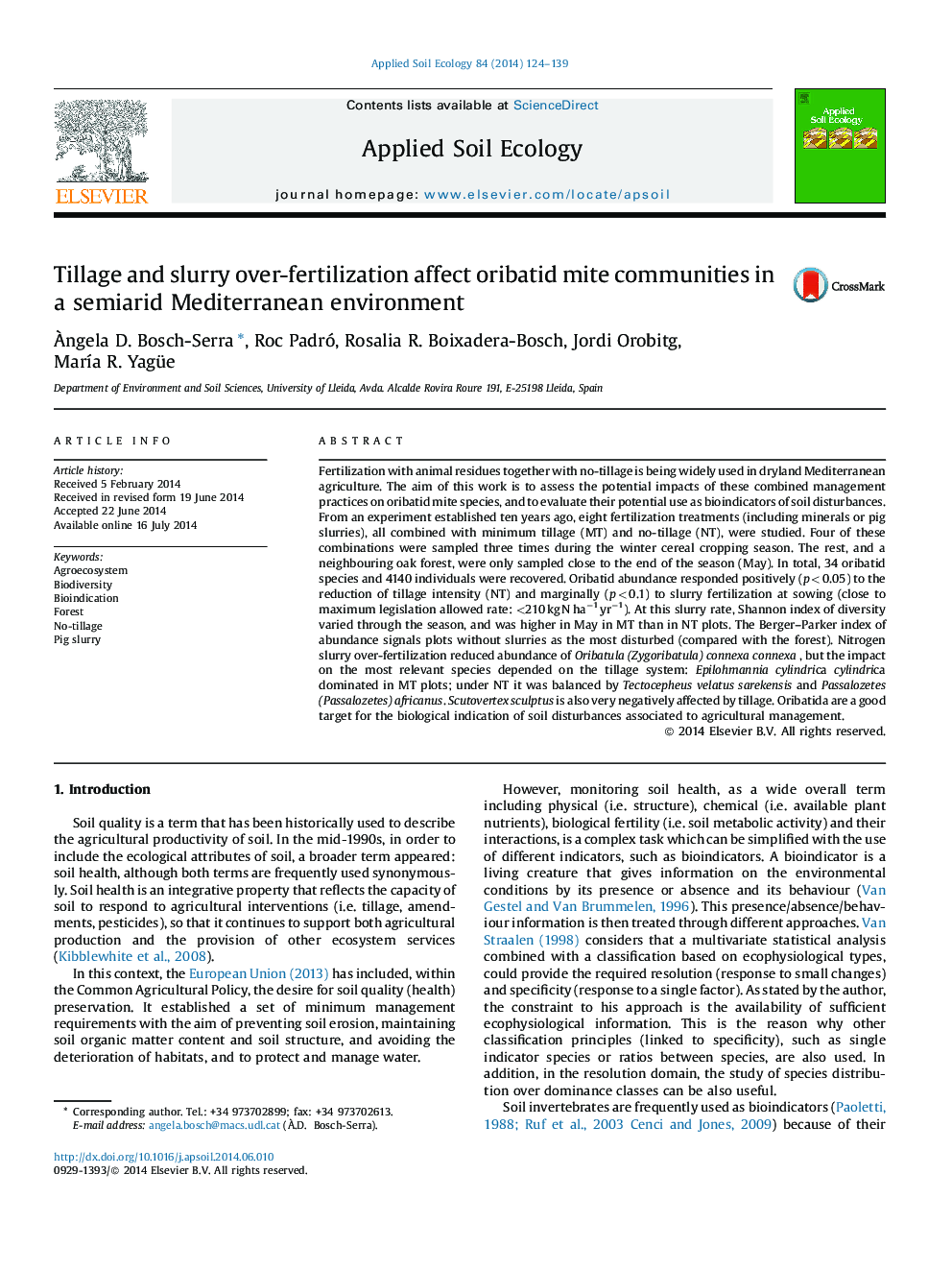| Article ID | Journal | Published Year | Pages | File Type |
|---|---|---|---|---|
| 4382174 | Applied Soil Ecology | 2014 | 16 Pages |
•In dryland agriculture, no-till is linked to the highest abundance of Oribatida mites.•Slurry, at agronomic rates, can temporarily increase mite abundance.•Slurry use, according to Berger–Parker index, reduces fertilization soil disturbance.•Epilohmanniacylindricacylindrica predominates in N overfertilized plots under MT.•Oribatula (Zygoribatula) connexaconnexa abundance is reduced by excess of N.
Fertilization with animal residues together with no-tillage is being widely used in dryland Mediterranean agriculture. The aim of this work is to assess the potential impacts of these combined management practices on oribatid mite species, and to evaluate their potential use as bioindicators of soil disturbances. From an experiment established ten years ago, eight fertilization treatments (including minerals or pig slurries), all combined with minimum tillage (MT) and no-tillage (NT), were studied. Four of these combinations were sampled three times during the winter cereal cropping season. The rest, and a neighbouring oak forest, were only sampled close to the end of the season (May). In total, 34 oribatid species and 4140 individuals were recovered. Oribatid abundance responded positively (p < 0.05) to the reduction of tillage intensity (NT) and marginally (p < 0.1) to slurry fertilization at sowing (close to maximum legislation allowed rate: <210 kg N ha−1 yr−1). At this slurry rate, Shannon index of diversity varied through the season, and was higher in May in MT than in NT plots. The Berger–Parker index of abundance signals plots without slurries as the most disturbed (compared with the forest). Nitrogen slurry over-fertilization reduced abundance of Oribatula(Zygoribatula) connexa connexa , but the impact on the most relevant species depended on the tillage system: Epilohmannia cylindrica cylindrica dominated in MT plots; under NT it was balanced by Tectocepheus velatus sarekensis and Passalozetes (Passalozetes) africanus. Scutovertex sculptus is also very negatively affected by tillage. Oribatida are a good target for the biological indication of soil disturbances associated to agricultural management.
